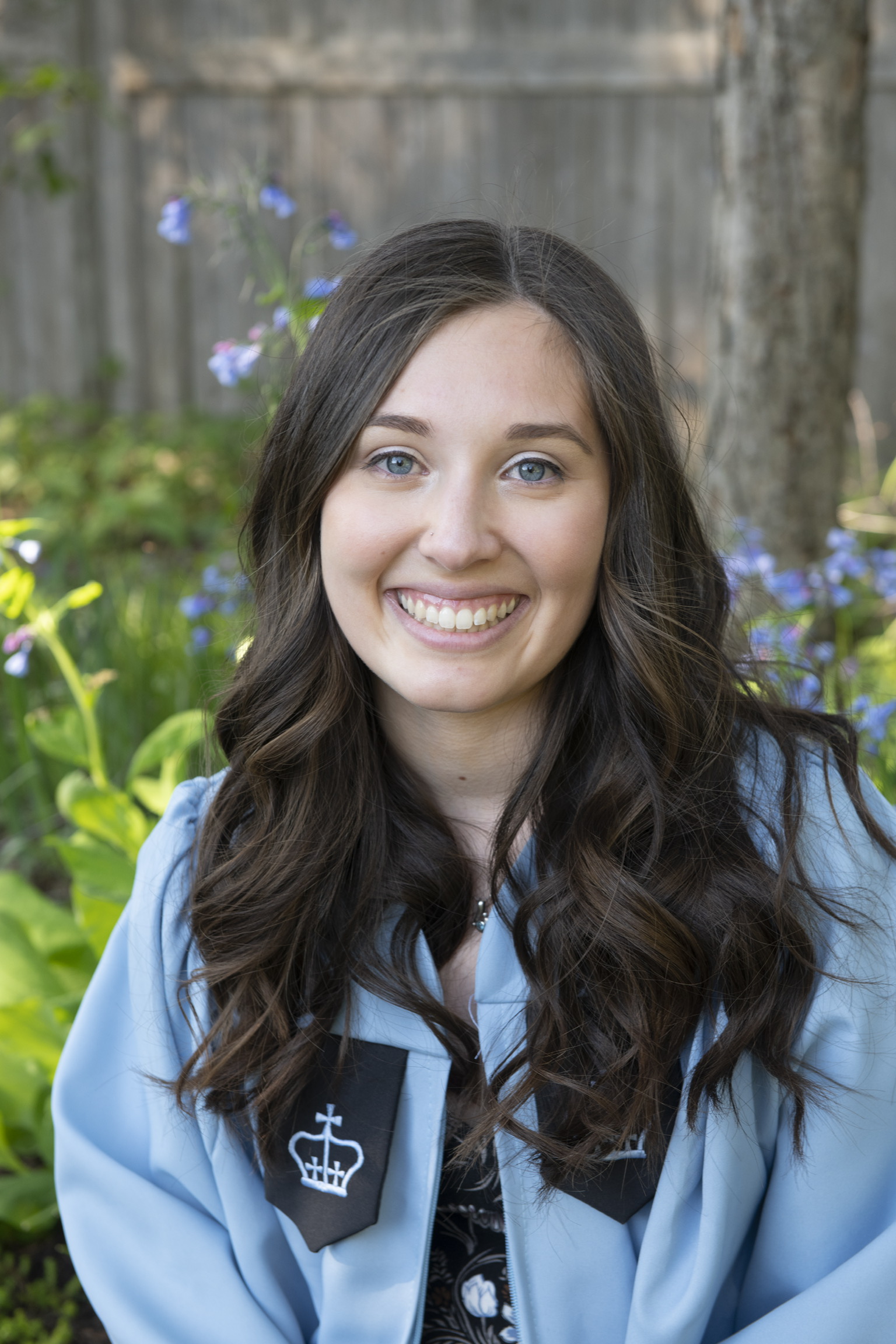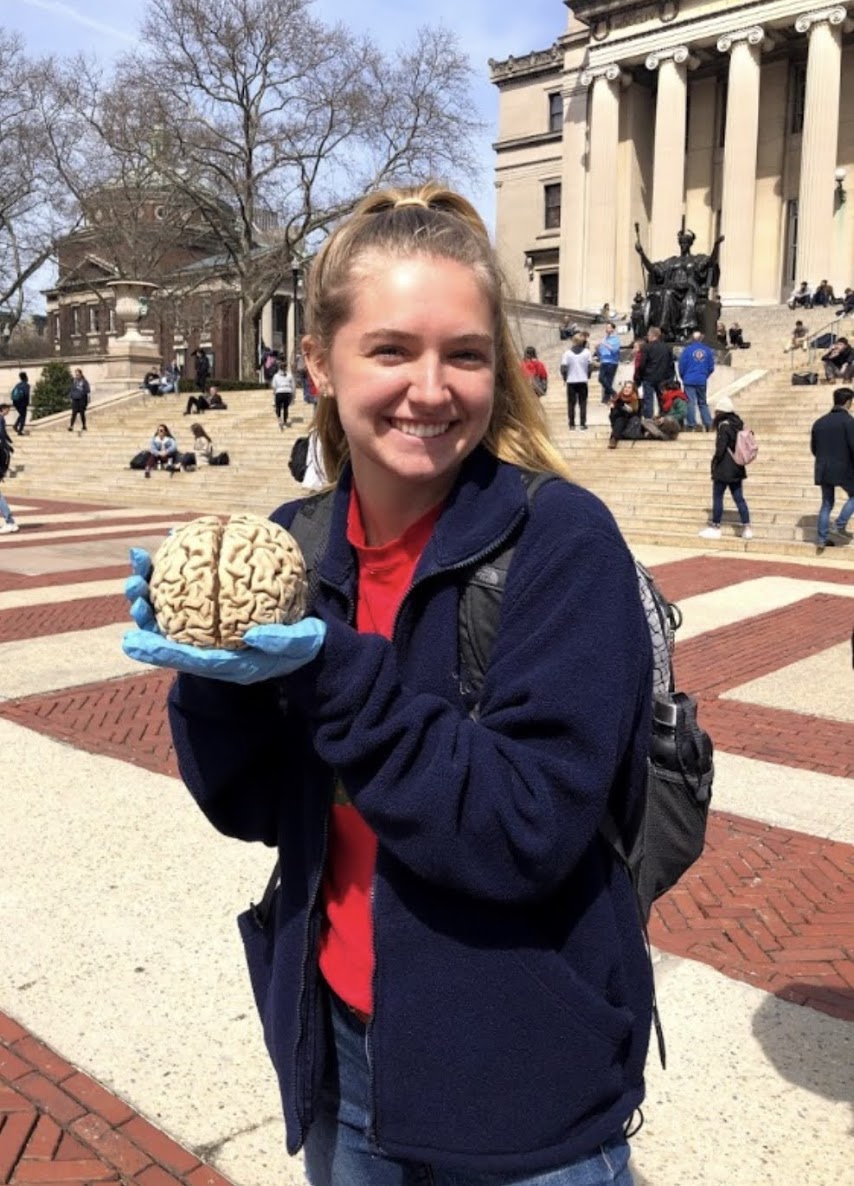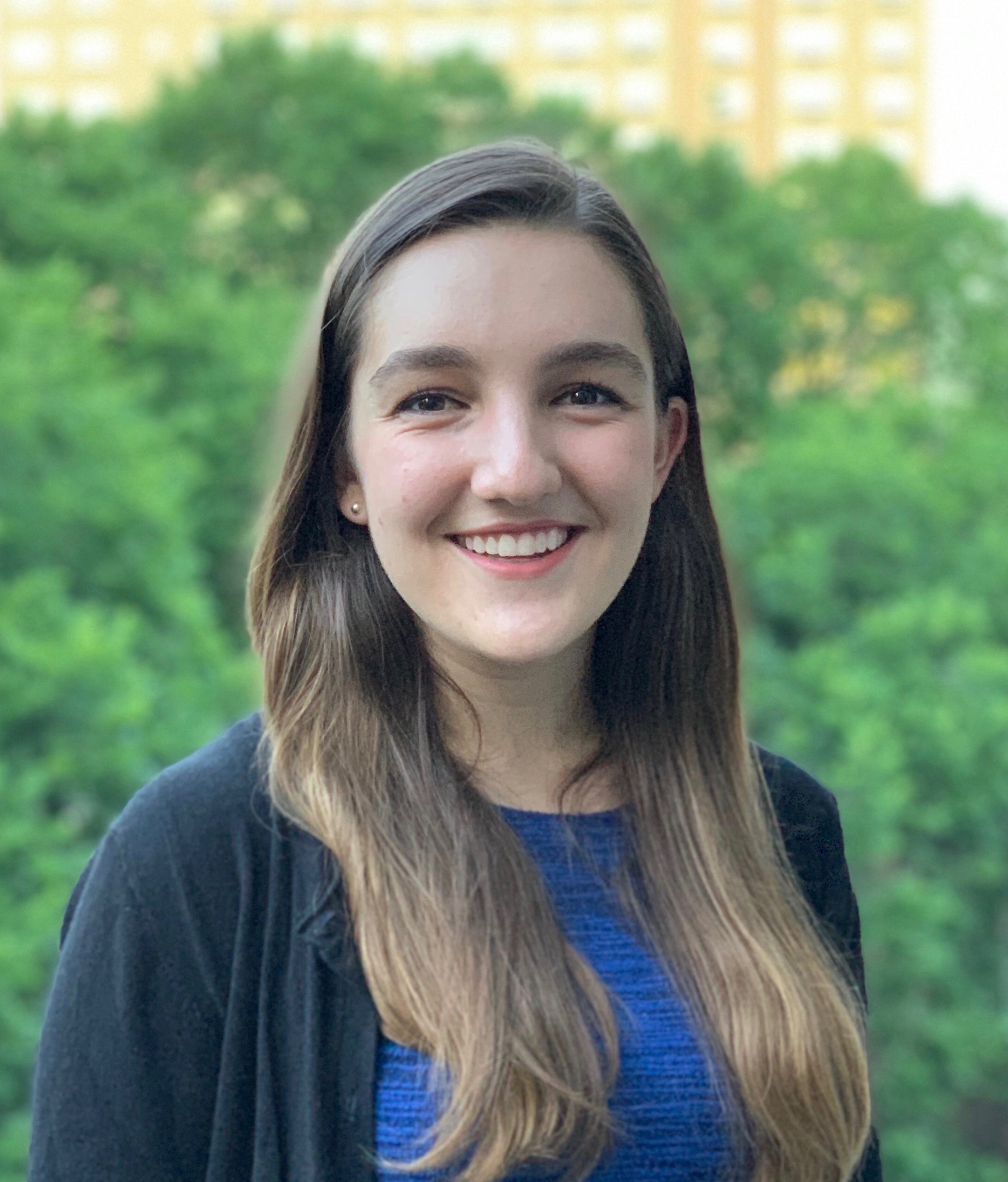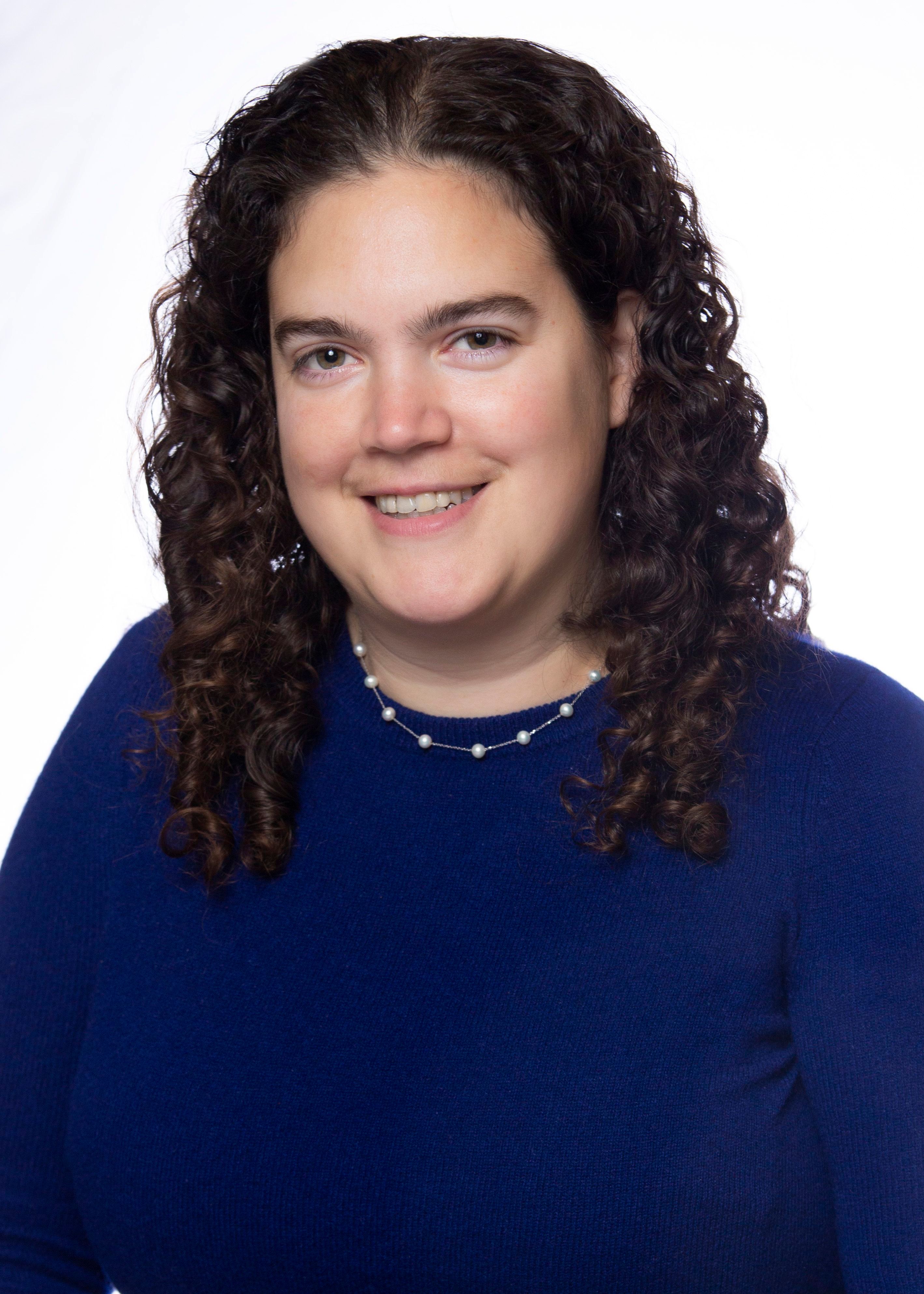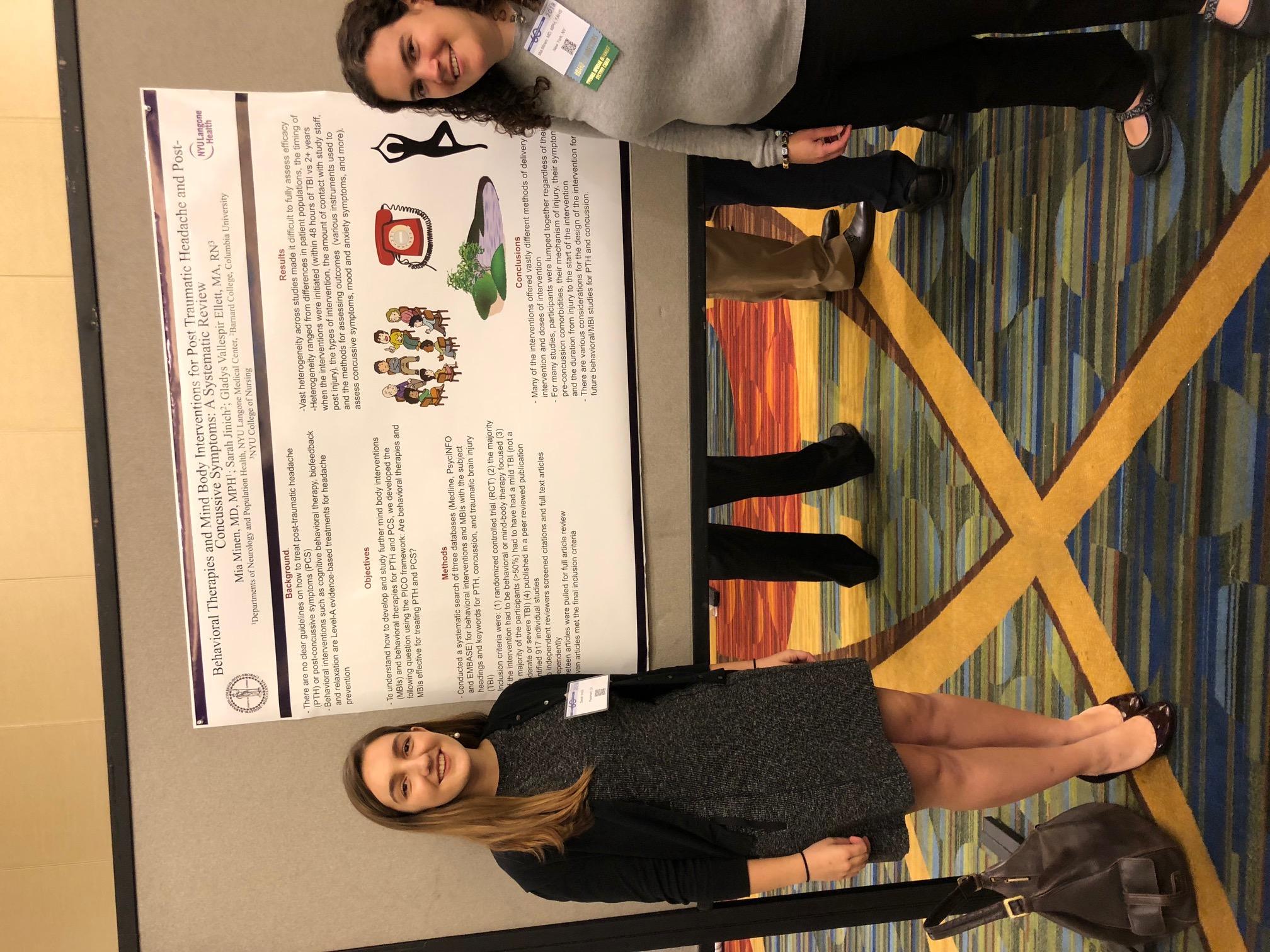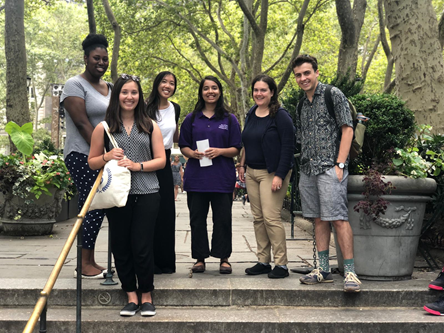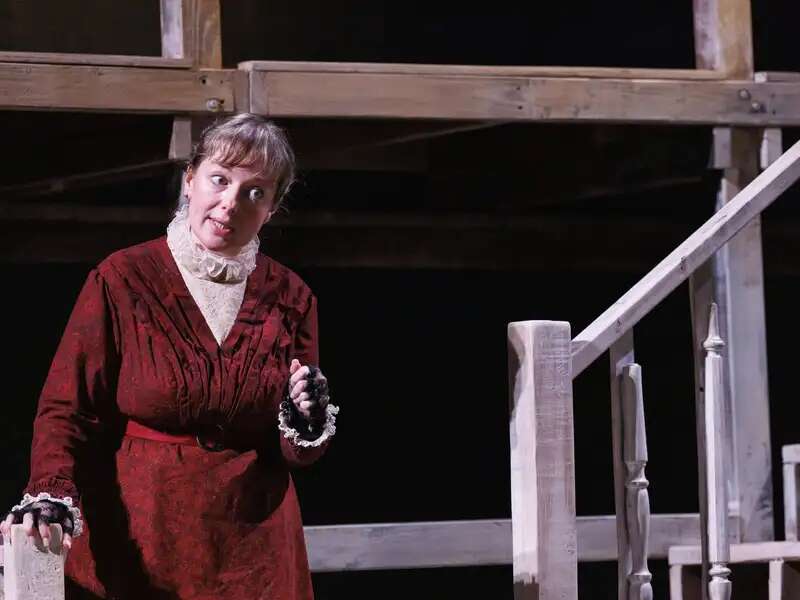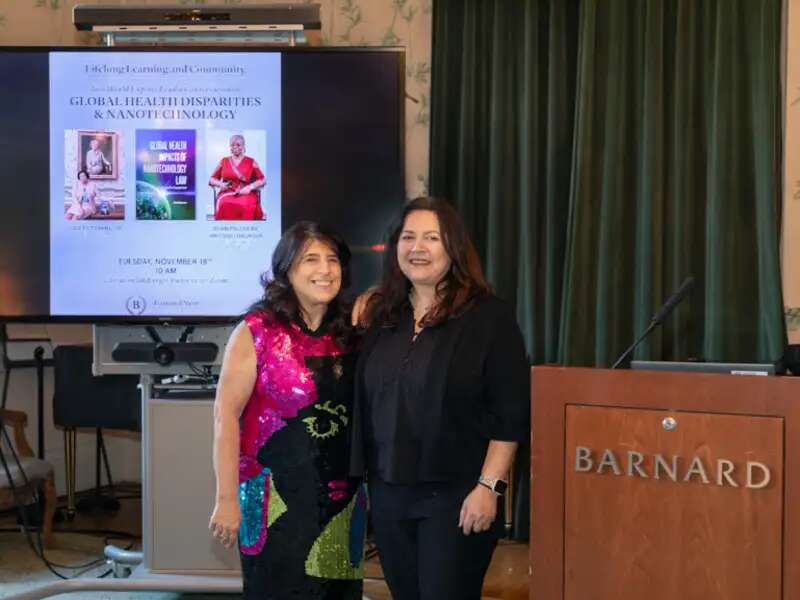At Barnard, mentorship is a relationship that extends beyond graduation day, with students and alumnae connected through a tightly knit network that spans diverse professional fields and class years. For Mia Minen ’03 — who has mentored Sarah Jinich ’19, Talia Boyers ’20, and Jana Jaran ’22, as well as nearly a dozen other Barnard students and alumnae — assisting and encouraging up-and-coming STEM majors to publish research papers is practically her second job.
On July 6, after working on one of Minen’s long-term projects that focuses on migraine research and the use of technology to improve therapy techniques, Minen, Boyers, and Jaran put their unique Barnard bond to work when they published the study “Understanding What People With Migraine Consider to Be Important Features of Migraine Tracking” in the American Headache Society’s official journal, Headache: The Journal of Head and Face Pain. In 2019, Minen, Jinich, and others co-authored a paper in Nature Research titled “Smartphone-Based Migraine Behavioral Therapy.”
“Working on Dr. Minen’s team has given me so many opportunities for creativity within the STEM field, which I think is often difficult to find in lab settings,” said Jaran. “These types of projects have helped me understand that I’m really drawn toward the intersection of artistic creativity and scientific research.”
Minen, chief of headache research at NYU Langone Health and associate professor in the departments of population health and neurology at the NYU Grossman School of Medicine, knows it’s a major accomplishment for a recent graduate or current student to publish a paper in a scientific journal. Academic publishing can give early career scholars and scientists a leg up in a competitive job market.
“Many Barnard students take advantage of the fine basic lab science experience that Barnard has to offer, but they don’t always have the clinical connection, which is important if they want to pursue a career as a clinician or as a clinician researcher,” Minen explained. “Working with students has made me realize the importance of integrating the undergraduate neurosciences with clinical neurology as these programs continue to develop and evolve.”
In recognition of Barnard’s wellness campaign, Feel Well, Do Well @ Barnard, this special “Break This Down” roundtable discussion explores migraine research, Barnard connections, and the importance of learning from other experts in STEM to find one’s own voice.
What did your new study, “Understanding What People With Migraine Consider to Be Important Features of Migraine Tracking,” find?
Talia Boyers ’20: The RELAXaHEAD app that was developed by Dr. Minen allows people with migraines to track their headache characteristics, sleep, medications, and Progressive Muscle Relaxation (PMR) therapy usage with features embedded in the app. The app also includes a note section, in which people could write whatever thoughts they want to record. We wanted to see what people were tracking in an mHealth [mobile health] app in practice, rather than hypothetically. We did this by analyzing all 5,364 notes to identify themes that reflected similar characteristics and patterns about how subjects chose to use the note section. We found that some people used it like a diary; some wrote down particular details related to headaches, while others used it very little or not at all. What was interesting was that in addition to using the specific tracking features of the app, many people were using the note section to expand on this information. This suggests that people with migraines want freedom in how they track their information related to headaches and that, when developing mHealth (mobile health) apps, there may not be a one-size-fits-all approach.
What role does technology play in migraine research or pain relief?
Jana Jaran ’22: Using technology to provide medical treatment is a really great way to attack the issue of health care inaccessibility in the U.S. PMR, which is the behavioral therapy that is provided through the RELAXaHEAD app, has already proven to be an effective preventative treatment for migraines, but our goal was to see whether it was feasible to provide this behavioral therapy through a smartphone application. Ideally, if migraine patients practice regular behavioral therapy through the app, they will require fewer visits to the emergency department, which can be costly, or payments for in-person therapy or medication.
TB: Tracking information related to migraines in mHealth apps allows physicians to gain insight into the best ways to help their patients manage their migraines. By providing technology that people will actually use long-term, more information is able to be collected, which helps to improve their migraine management. It is so important to include people with migraines in the development of technology for their use, because they know what is most helpful for them to keep track of. With this in mind, we used this study to analyze how people use the RELAXaHEAD app.
Sarah Jinich ’19: Additionally, migraines can be so debilitating that patients either physically may not feel well enough to go into an office to receive treatment or may have their migraines exacerbated by the sounds and light they encounter on the way, especially in New York City. In our study, we found that levels of patient-reported anxiety or depression were associated with increased or decreased use of the app and PMR therapy, respectively. This is valuable knowledge for physicians to have, as it could help further tailor treatment plans to a patient’s individual needs. It can be incredibly frustrating to try multiple treatments and feel no pain relief, so this information can help pinpoint which kinds of treatments will be most effective for certain patients.
In light of recent events, research into technological advances in medicine is even more important. During the COVID-19 pandemic, solutions such as telehealth doctors visits were paramount to maintaining treatment and care in many patient populations. I think even when the pandemic subsides, we’ll be going back to a new normal in which mobile health is much more integrated into daily life.
How did the collaboration on the paper happen?
Mia Minen ’03: Six years ago, when I first moved back to NYC to take on my faculty position at NYU, I wanted to give back to Barnard. I reached out to say that I wanted to invite a Barnard student to conduct research with me. My first Barnard student, Kate Lindberg ’17, volunteered with me from 2016-2017 and did excellent work, publishing two papers with me, and every year since then I have contacted Barnard to invite more students to volunteer with me. It has been so fun and rewarding to me and to the students, and now I have taken up to four Barnard students a year to work with me. I tell students that if they do good work, I will allow them to present posters and help with manuscript writing.
SJ: To jump in about how I came to collaborate with Dr. Minen, I found a posting for the research position in the Barnard career portal. I was instantly drawn to the position because of the unique clinical opportunities and the chance to work with a Barnard alumna. Once I was in the position, I realized there was a Barnard community of students who had already worked with Dr. Minen or who were going to be working with her at the same time as me. It was great to have that network, and I made new friendships through this research opportunity that I took back to campus.
JJ: Talia and I started interning with the NYU Langone Headache Research team in June 2019 and got started right away working on one of Dr. Minen’s long-term research projects, recruiting migraine patients in the emergency department to test a smartphone-based behavioral therapy for migraine. During training, we became really familiar with the research behind behavioral therapy as a method of preventative care, which is incorporated into the RELAXaHEAD app. It was great to work on a long-term project like this one, because data from previous years of trials was available to be analyzed, which is exactly what we did.
TB: When we were being trained by Dr. Minen in qualitative coding for the study, Jana and I found that we approached the note analysis in a similar way and agreed that we would make a good team for the study. In addition to what Jana said about working on this long-term project, it was also great to see multiple phases of the studies that Dr. Minen has started. We were able to recruit patients in both the emergency department and the neurology department for ongoing studies, while also analyzing data from a previous study that resulted in the paper we just published.
My first Barnard student, Kate Lindberg ’17, volunteered with me from 2016-2017 and did excellent work, publishing two papers with me, and every year since then I have contacted Barnard to invite more students to volunteer with me.
How has Dr. Minen created space for each of you where you’ve found your career voice?
JJ: Working on Dr. Minen’s team has given me so many opportunities for creativity within the STEM field, which I think is often difficult to find in lab settings. While still adhering to traditional guidelines of clinical research and connecting with mentors and professionals in qualitative coding, Dr. Minen gave Talia and I a lot of freedom in designing the study, deciding what technology platforms would be best to complete certain tasks, and creating appropriate timelines for task completion. Besides this study, I’ve also worked on a program developed by Dr. Minen titled “Headache and Arts,” by creating an educational movie and building a curriculum of neuroscience education for high school students. These types of projects have helped me understand that I’m really drawn toward the intersection of artistic creativity and scientific research.
TB: Dr. Minen gave us a unique clinical research opportunity. As a pre-med student, I valued experiencing different aspects of the health care field by recruiting research participants in both the emergency department and a neurology office. I was able to meet with and screen people with migraines, as well as analyze data from previous studies. In speaking directly with Dr. Minen’s patients, it was clear how important her focus on migraine management is to their quality of life. Dr. Minen’s passion for finding new smartphone-based behavioral interventions to make migraine management more accessible empowers patients as they take an active role in their care. This experience has helped to shape my own philosophy of a more holistic, patient-centered approach to medicine.
SJ: What I found so unique about working with Dr. Minen was that she created opportunities to challenge yourself to become more knowledgeable and professional. I often felt uncertain about carrying out tasks assigned to me, but it was precisely by being put in situations slightly beyond my comfort zone that I grew my skill set and agency in scientific research. Working with Dr. Minen, I was able to have many experiences that are rare as an undergraduate scientist, such as hands-on interaction with patients and publishing a manuscript. This made the transition into my current job in clinical research very straightforward, as I already had a solid foundation working in that sphere.
A fond memory I have is going to the American Headache Society’s annual conference with Dr. Minen to do two poster presentations on our studies. This was my first academic conference, and it was a huge learning opportunity. Though I initially felt nervous presenting to established scientists, I became more confident talking about my research and responding to questions about the study as the conference went on. At one point, I presented to a very encouraging woman who spoke to me briefly about the value of young women getting involved in STEM research — thankfully, Dr. Minen waited until afterward to inform me that I had unknowingly been presenting to the head of the organization.
So Dr. Minen is creating unbreakable Barnard bonds?
TB: It has been an honor to be part of a long lineage of incredible Barnard students who have worked with Dr. Minen. I was able to play a role in advancing some of the research done by students before me and begin new research for future students to continue. I have seen Dr. Minen take an active role in her mentees’ future successes, and I hope that as I advance in my professional career I can give back to the Barnard community in the same way. I was also able to use our research for my Guided Research and Seminar thesis, where we were able to share and learn from each other about our respective research fields. I was, and continue to be, inspired by the passion of my fellow Barnard students as they realize their personal and professional goals.
JJ: Dr. Minen’s lab was a really great place for me to start my research experience because, as a Barnard alumna, I think Dr. Minen really understands the importance of women in the STEM field. Our lab team was composed mostly of women, and I felt really inspired to be working alongside Dr. Minen and Talia, who was a senior at Barnard at the time, and other women in our lab. I felt like the group was a productive space for collaboration, and it provided me with several great partners and role models for careers in STEM, research, and medicine.
SJ: It was so special to have my first research mentor be a fellow Barnard woman. Dr. Minen knew what it was like to be a student just starting out in research and had so much knowledge to share about the pre-med and medical school journey. During my time at Barnard, I worked with Dr. Minen and also in Professor [Elizabeth] Bauer’s lab, and both research groups were all women. It was wonderful to have strong women role models introducing me to research. I also appreciated the opportunities to train fellow Barnard peers that transitioned into both of these groups after me.
In general, I’ve found the extended Barnard community to be so supportive. Fellow Barnard graduates are not just willing but eager to help out members of the community in any way possible. I have certainly benefited from this personally and professionally and look forward to being able to pass it forward to future generations of Barnard students.
MM: While I was mentoring them in research-related activities, I certainly learned a lot from them as well! I was able to keep up with what was going on at Barnard, but I also learned about modern technologies they employed for developing certain research programs, the latest courses, and more. Most importantly, I think it was the shared camaraderie and shared goal of helping women succeed in the sciences that has brought us together.
How has mentoring Barnard women in STEM helped to expand your research?
MM: I have enjoyed helping with pre-professional mentoring, having advised some students about a medical career and helping support their medical and graduate school applications. Also, it has been wonderful to connect with Barnard in other related capacities. I was invited by Barnard Health Services to give a talk to the medical staff about headache disorders and have helped them manage migraine in some Barnard students who have this disabling disorder.
More globally, neuroscience programs have really grown across the country in recent years. Many Barnard students take advantage of the fine basic lab science experience that Barnard has to offer, but they don’t always have the clinical connection, which is important if they want to pursue a career as a clinician or as a clinician researcher. Also, there is a shortage of neurologists, and we need to find ways to grow the neurology pipeline. Working with the students has made me realize the importance of integrating the undergraduate neurosciences with clinical neurology as these programs continue to develop and evolve. I have now developed an interest in trying to integrate the undergraduate neurosciences with clinical neurology.
Barnard experts explain.
